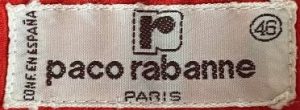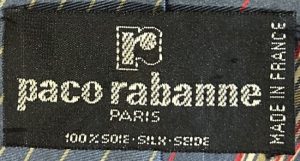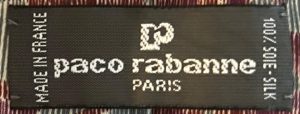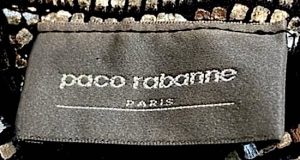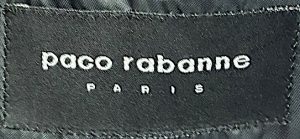Paco Rabanne was the pseudonym of Francisco Rabaneda Cuervo (1934–2023), a Spanish fashion designer. Paco Rabanne’s father was a Republican officer who was executed during the Spanish Civil War. His mother worked for Cristóbal Balenciaga, first in Spain, then in Paris, moving there with her four children.
After studying architecture in Paris, Rabanne turned to fashion and began his career by sketching for Dior, Givenchy and Charles Jourdan, later creating jewelry for Givenchy, Dior, and Balenciaga. He founded his own fashion house in 1966. Innovating with unconventional materials like metal, plastic and paper for his futuristic creations, he was deemed one of the “fashion revolutionaries” by Women’s Wear Daily. His collections in the 1960s and 1970s were marked with daring pieces and cinematic collaborations including the futuristic costume that Jane Fonda wore in the sci-fi film Barbarella. At the same time, he launched a range of perfumes. Throughout his career, he explored different artistic fields, from theater to painting, and left a remarkable creative legacy until his death in 2023.
Written by PL_Vgnt

